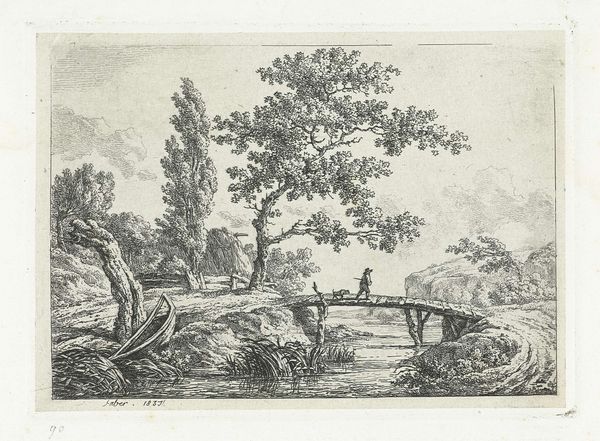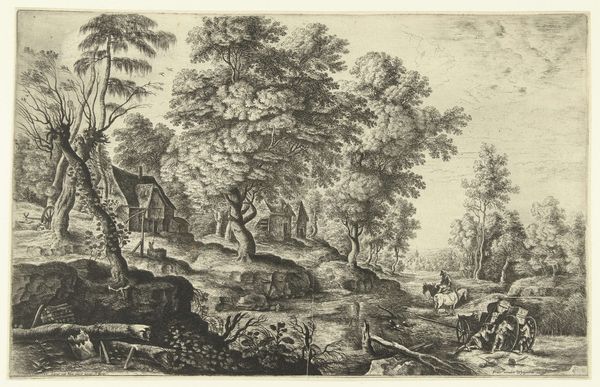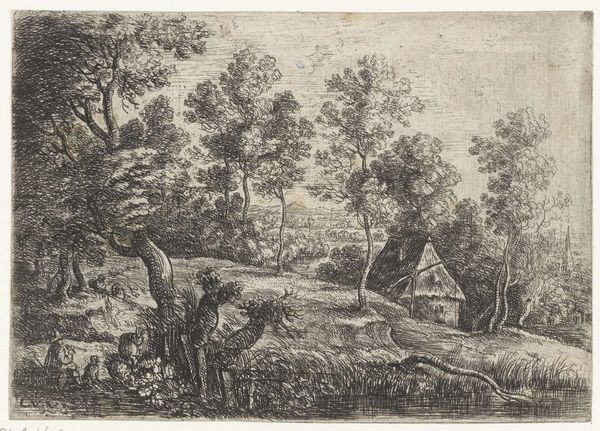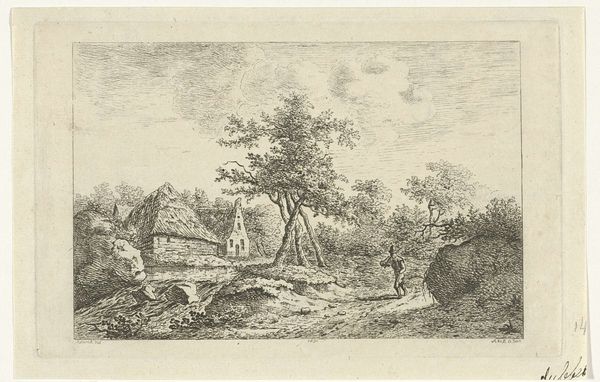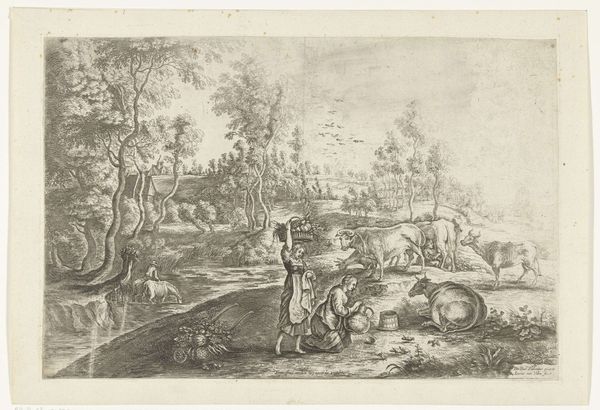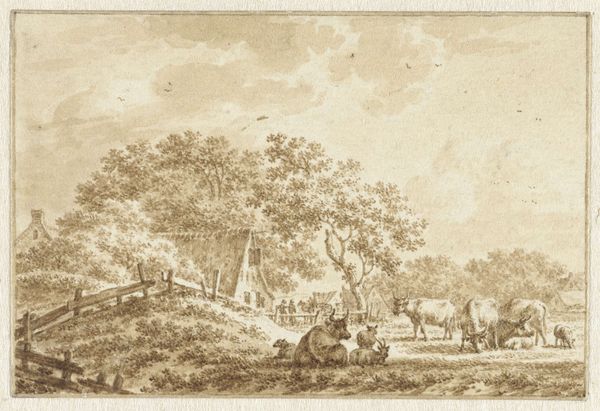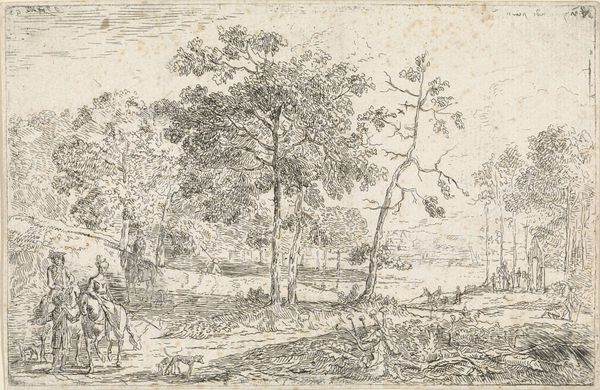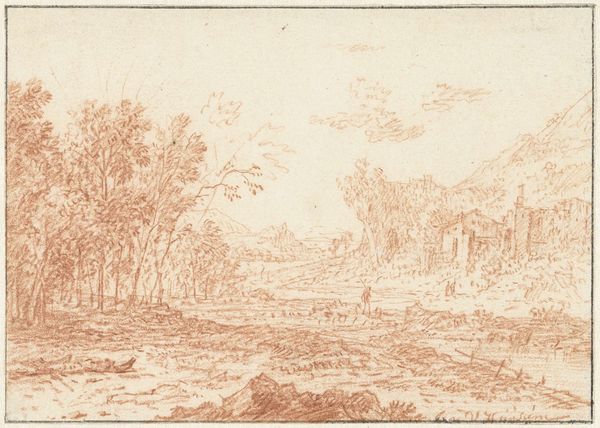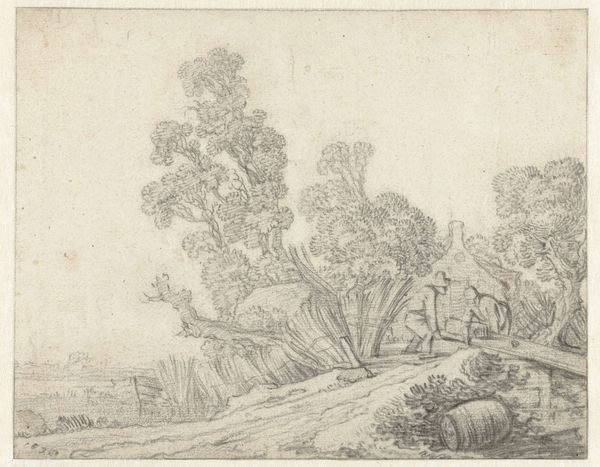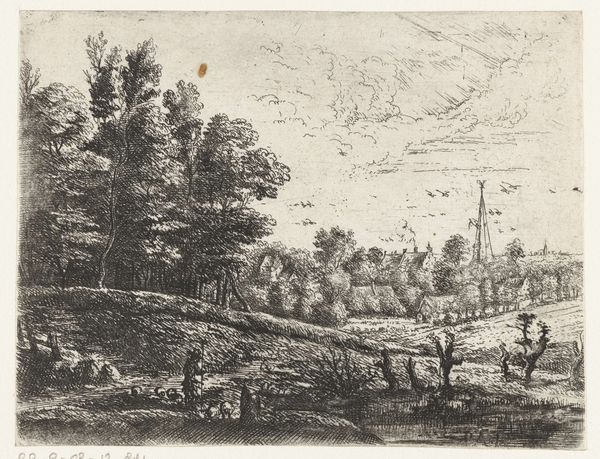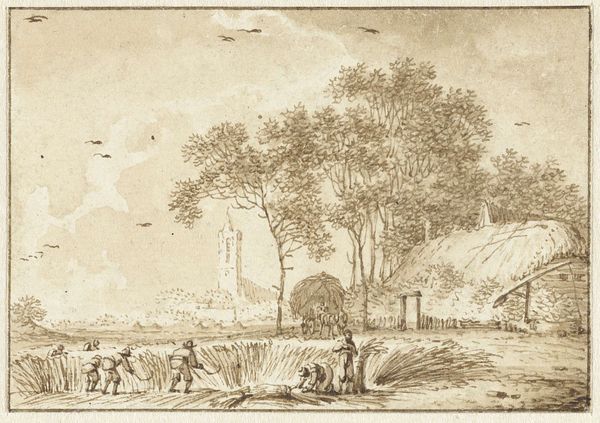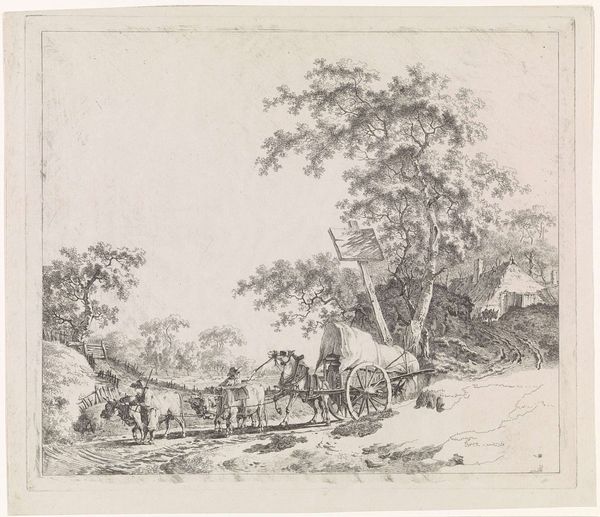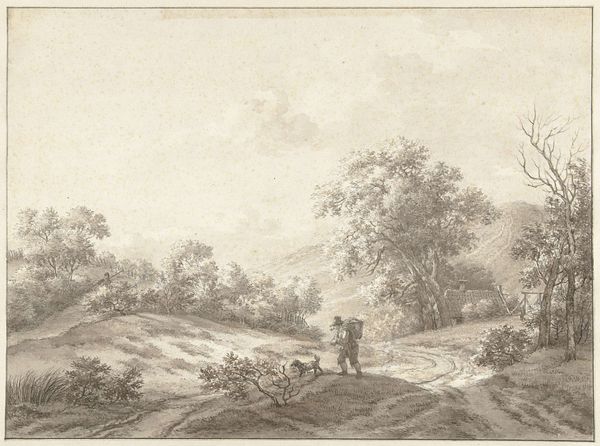
drawing, pen
#
drawing
#
pen sketch
#
landscape
#
pen
#
genre-painting
Dimensions: height 58 mm, width 85 mm
Copyright: Rijks Museum: Open Domain
Editor: This is Jacob Cats' "Landscape with Fishermen in a Boat and Hay Wagon on a Bridge" from around 1780. It's a pen drawing, and there's such a delicate feel to the whole scene, a quiet stillness almost. What do you see in this piece, especially considering the period? Curator: It's tempting to romanticize the rural idyll depicted here, isn't it? But I think it's important to acknowledge how these genre scenes often gloss over the realities of labor and social hierarchies of the late 18th century. While Cats presents us with a seemingly peaceful landscape, whose labor made this landscape possible, and who benefitted most? Editor: That's an interesting point. I was so focused on the composition—the balance between the boat on the left and the wagon on the right—that I missed the bigger picture. Curator: Exactly. The visual harmony might even function to normalize the existing power dynamics. Think about the hay wagon for example. How do class and gender intersect in determining who gets to ride and who has to lead the horses, or gather hay, likely under harsh conditions? Editor: So you're saying that what seems like a simple landscape is actually a representation of social inequality? Curator: Precisely! The art historical narrative often omits those voices from its dialogue. And who do we, as viewers, identify with in this scene, and why? Are we perhaps positioned to admire this view *from* a place of relative comfort or privilege? It encourages us to interrogate our own positionality when looking at art like this. Editor: That’s definitely given me a new way of looking at 18th-century landscapes. Curator: Indeed! It's about moving beyond aesthetic appreciation and questioning whose stories are being told, and whose are being left out of the picture.
Comments
No comments
Be the first to comment and join the conversation on the ultimate creative platform.
